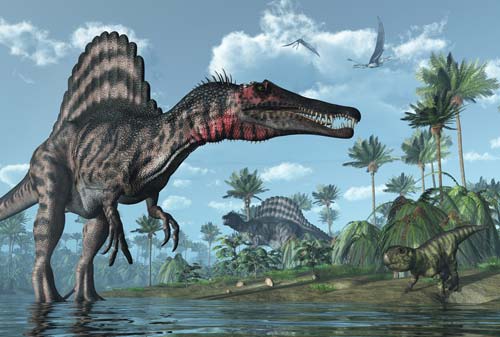The fact is, we don't really know a great deal about the dinosaurs. For the whole of the Age of Dinosaurs, fewer than a thousand species have been identified (almost half of them known from a single specimen), which is about a quarter of the number of mammal species alive now. Dinosaurs, bear in mind, ruled the Earth for roughly three times as long as mammals have, so either dinosaurs were remarkably unproductive of species or we have barely scratched the surface (to use an irresistibly apt cliche).

For millions of years through the Age of Dinosaurs not a single fossil has yet been found. Even for the period of the late Cretaceous — the most studied prehistoric period there is, thanks to our long interest in dinosaurs and their extinction — some three quarters of all species that lived may yet be undiscovered. Animals bulkier than the Diplodocus or more forbidding than tyrannosaurus may have roamed the Earth in the thousands, and we may never know it. Until very recently everything known about the dinosaurs of this period came from only about three hundred specimens representing just sixteen species. The scantiness of the record led to the widespread belief that dinosaurs were on their way out already when the KT impact occurred.












